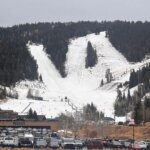Community
Meet Heber’s Bart the Bear, the Hollywood icon who helped save a million acres
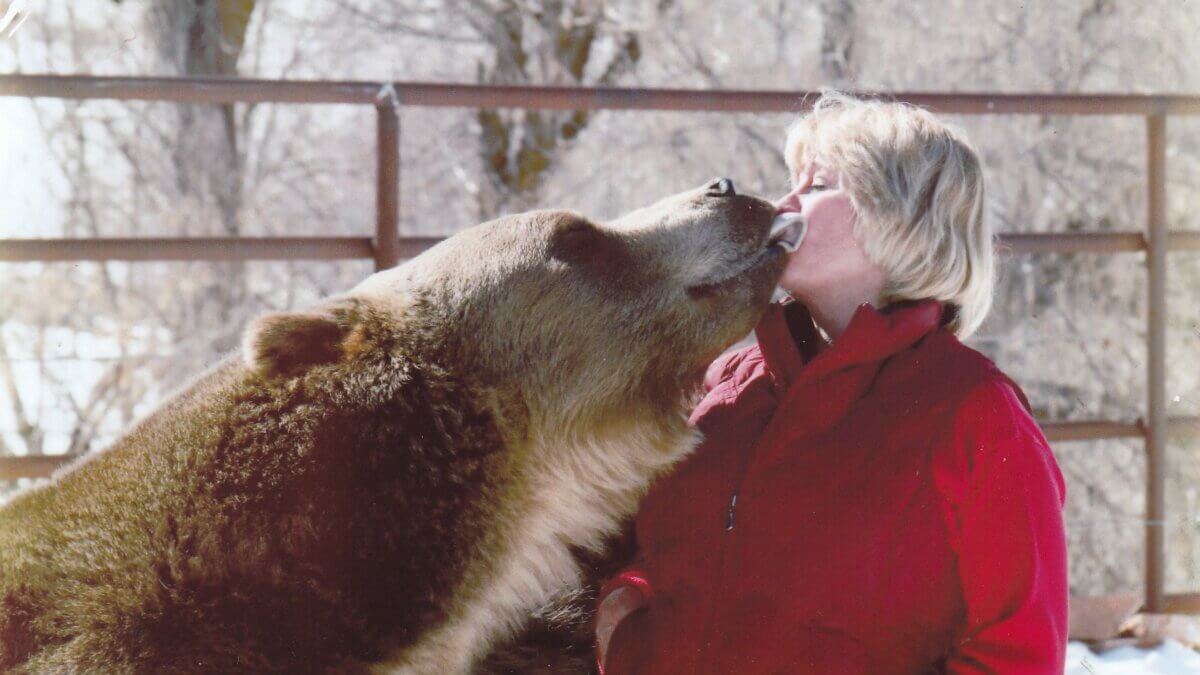
Lynne Seus shares a quiet moment with Bart the Bear at the couple’s ranch near Heber City. Over five decades, Lynne and her husband Doug Seus raised and trained some of Hollywood’s most famous bears, later turning their work toward wildlife conservation through the Vital Ground Foundation. Photo: Lynne Seus
HEBER CITY, Utah — Long before grizzly bears and Hollywood sets entered their lives, one offbeat question sparked it all.
“Doug came home, we’d only been married about a week, and said, ‘Do you want to get a wolf instead of a dog?’” recalled Lynne Seus with a laugh. “Being a free spirit in the 1970s, I said, ‘Far out!’ And that was the start of our journey.”
More than five decades later, Lynne and her husband, Doug, have raised and trained some of the most famous bears in movie history from their ranch near Heber City. Their unlikely beginning evolved into a grizzly conservation legacy spanning more than a million acres of wild country in the Northern Rockies.
“We’ve been married over 50 years,” Lynne said. “It’s been a wonderful ride.”
From Green Beret to Grizzly Handler
When the couple met, their lives were worlds apart.
Doug, a former Notre Dame football player, left his full-ride scholarship to serve in the Army’s Green Berets during the Vietnam War. After Green Beret training they attached Doug to the 82nd Airborne division. Lynne studied theater and musical comedy at the Pasadena Playhouse, an Equity theater and college in Southern California.
They met after Doug’s military service while he was back in school, trying to figure out his next steps. The couple married in 1971 and spent a few years in California before moving to Utah, where their adventure with animals began.

They befriended a government trapper known as “Wolf Man Jim,” whose job was to eliminate “varmints” such as raccoons and foxes. “He had a soft heart,” Lynne said. “Instead of killing them, he’d bring them to us. A parade of wild babies started arriving.”
That early wolf and the rescued animals laid the foundation for their life’s work.
A Path to the Screen
Hollywood soon came calling.
“There was a TV show at that time called Grizzly Adams,” Lynne said. “That’s where we got our start with our small animals. We didn’t provide the grizzly, but we became known as people who trained animals for film.”
Independent wilderness films were in demand, and the couple realized they needed something bigger. “We realized if we were going to succeed, we needed a bear,” she said.
Licensed under USDA standards used by zoos, they were approved to work with accredited facilities that had surplus animals. “The Baltimore Zoo had two Kodiak bear cubs that needed placing. Suddenly, we were there,” Lynne said.
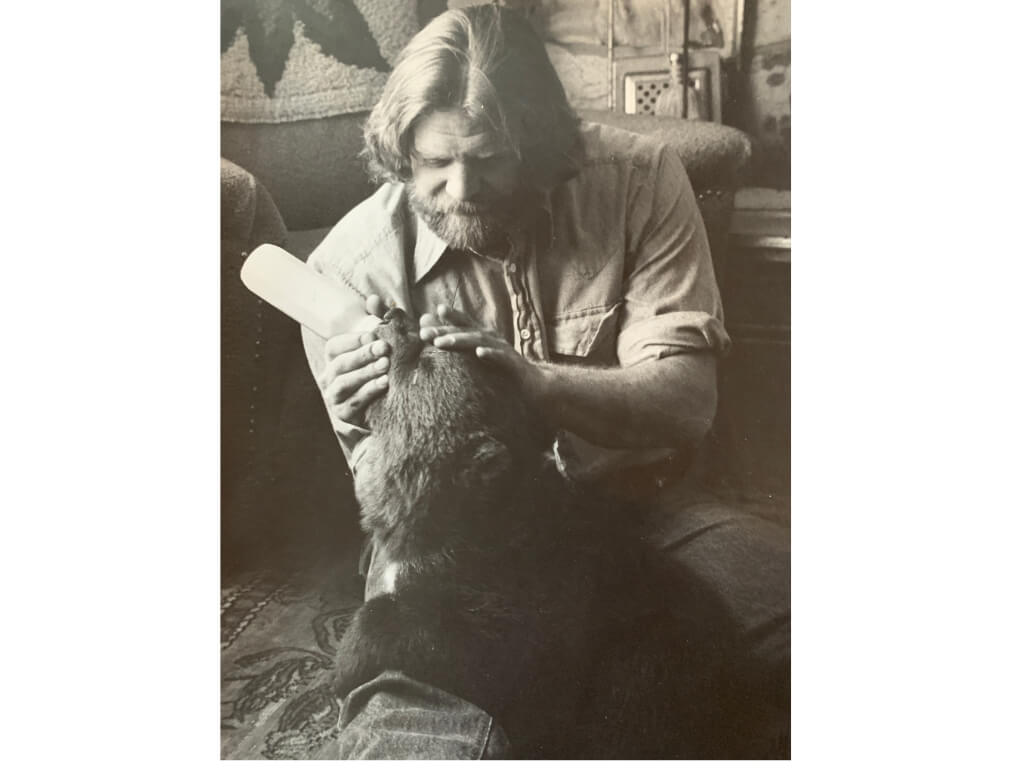
She had just given birth to their daughter, Sausha. “When the bears were six pounds, Sausha weighed six pounds,” she said. “That lasted a day — the bears grew to 1,500 pounds.”
They named the cubs Bart and Zack. “Zack was sweet but didn’t like the commotion of a film set,” Lynne said. “Bart loved an audience. He enjoyed comedy. He couldn’t wait to hop out of the trailer and perform.”
Basic cues such as “come to your mark,” “sit,” and “come over here” were reinforced with food rewards, but Bart truly loved the show. “Bart performed for applause,” she said.
A Turning Point in The Bear
The shift from filmmaking to conservation began while working on The Bear, a 1988 film shot high in the Dolomite Alps of northern Italy.
During filming, Lynne and the art director, Yuri, were preparing a fake deer prop when the crew excitedly noticed a marmot nearby. “I started laughing and said, ‘Oh, Yuri, it’s just a marmot.’ And he said, ‘You don’t understand.’”
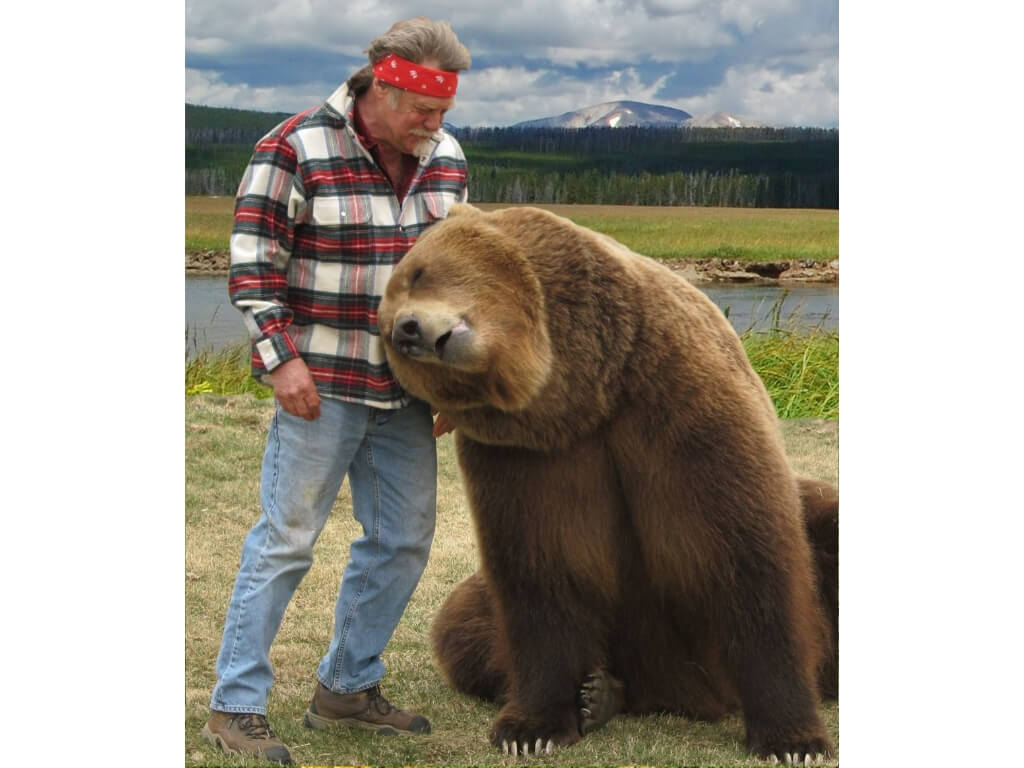
Marmots, he explained, were nearly all that remained of the region’s once-thriving wild animal population.
“That stopped me,” Lynne said. “It hit me that if we weren’t careful, that could happen in the Rockies, too — or anywhere, really.”
The moment stayed with her. “I promised Bart that our Rocky Mountain wildlife would never come to that,” she said. “We would do what we could to make sure grizzlies and other wild animals always had a place to live free.”
That promise became the seed of the Vital Ground Foundation, the conservation nonprofit the Seuses founded to protect grizzly habitat and open space across the Northern Rockies.
Loss and a Promise
Life with bears also brought heartbreak. Bart was eventually diagnosed with cancer. “For about a year and a half, Doug lay by his side and blended his food,” Lynne said. “When the cancer spread and he couldn’t get up, it felt heartless to keep him alive.”
Doug administered the euthanasia himself. “Bart died in his arms, taking his last breath,” Lynne said quietly. “That experience goes deep into your soul — and it stays there.”
Not long after, Alaska Fish and Game called. “They said, ‘We’ve got two little Kodiak bears whose mother was killed by a poacher. Do you want them?’” Lynne said.
The cubs became Bart II and Honey Bump. Bart II went on to star as a giant bear in Game of Thrones. Honey Bump worked too, though Bart II stole the spotlight. Today, Tank — a grizzly who roams their ponds and Daniels Creek — is their last working bear.
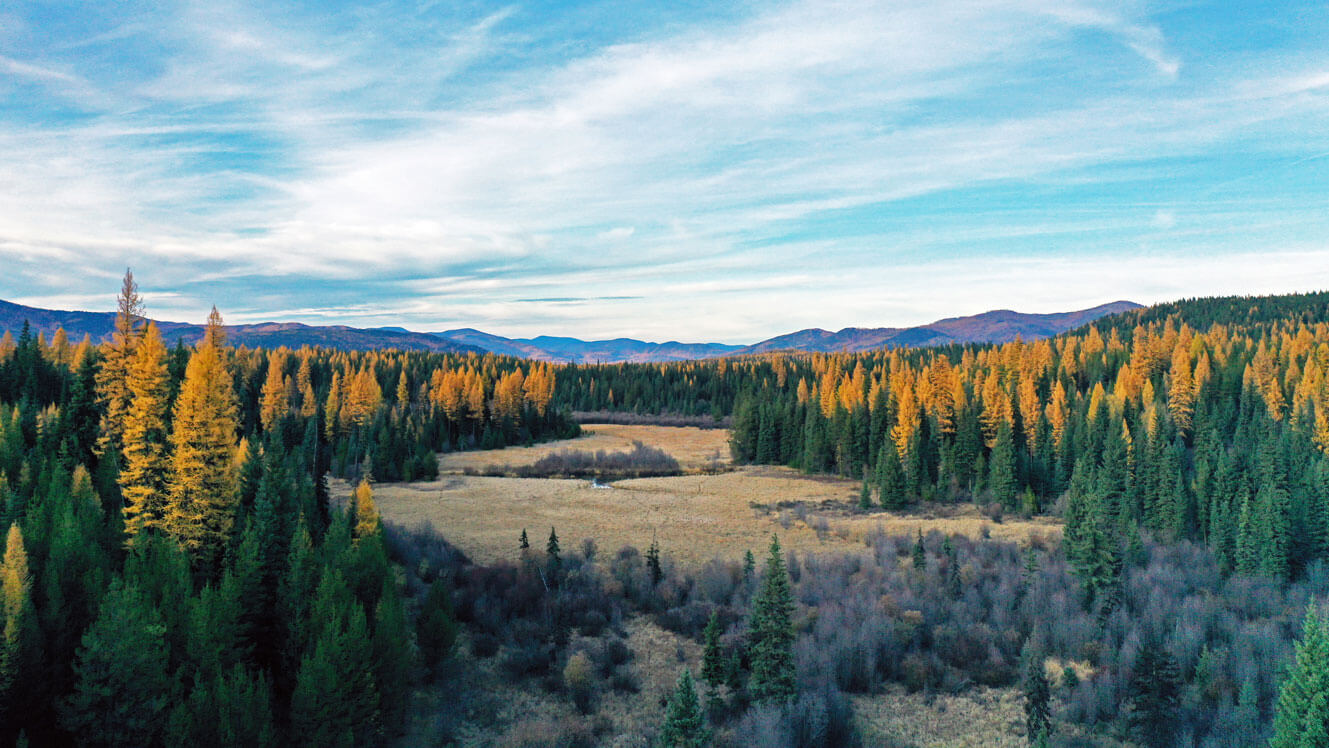
From Movie Sets to Millions of Acres
Over time, the couple realized their own needs were few. “At a certain point, we thought, ‘We’ve got a roof over our heads. What do we really need?’” Lynne said. “From then on, we took whatever the bears made and started a foundation called Vital Ground.”
Their first project was a 240-acre property near Choteau, Montana, along the Teton River — critical grizzly habitat and working ranchland. “That was the beginning,” she said. “We reached out to friends like Doug Peacock and started Vital Ground.”
Since then, the foundation has helped protect and connect more than a million acres for grizzlies and other wildlife. Many ranchers have become partners. “Not every one of them — some still don’t want predators near their livestock,” she said. “But some, like Mary Sexton, appreciate the balance of nature.”
These landowners have placed conservation easements on their properties — permanent legal agreements that keep land open for wildlife. “When the landowner passes, the easement goes with the land,” she said. “It will always be protected.”
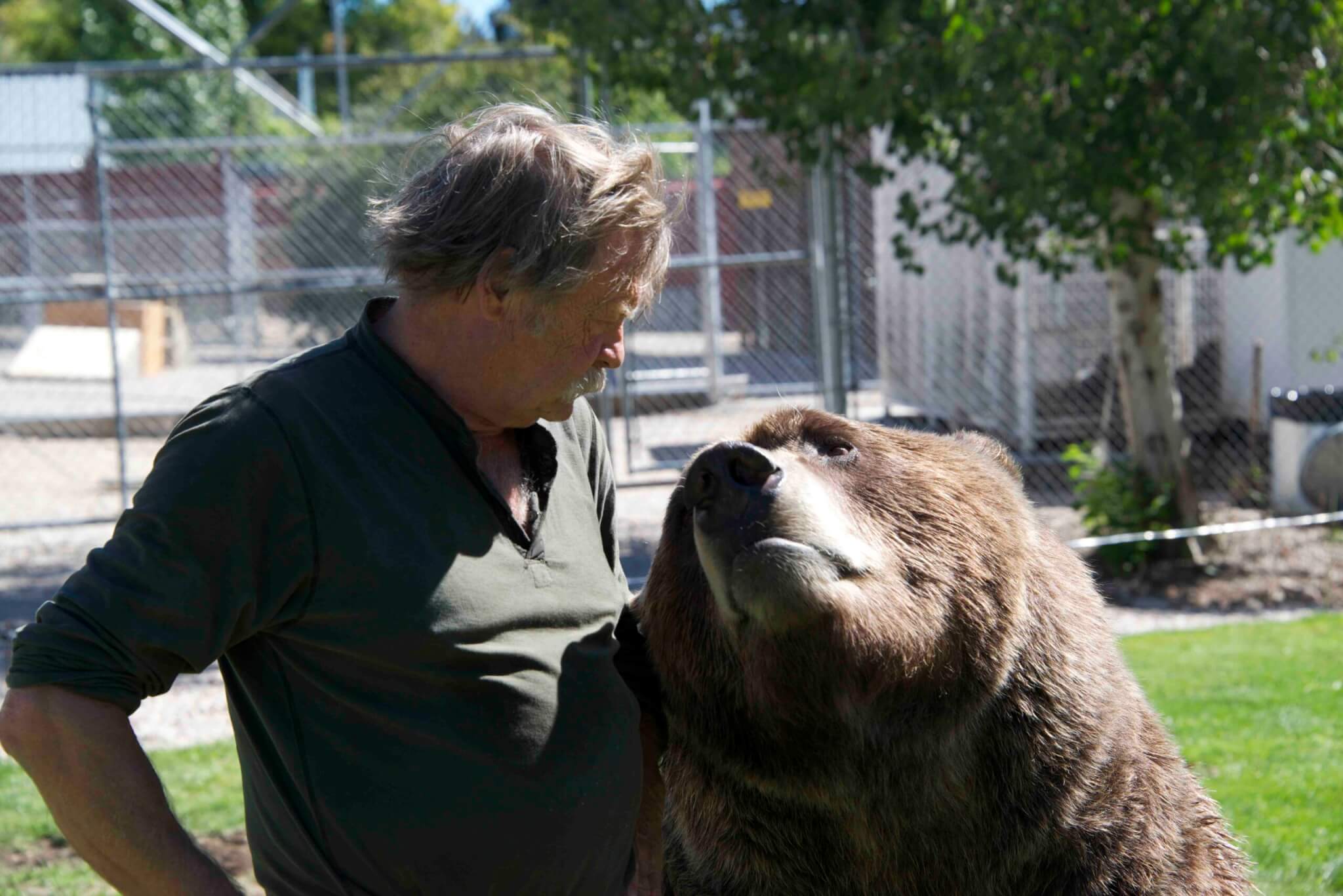
Follow Your Dream
Asked what she would tell young people who are just starting to follow a passion, Lynne didn’t hesitate. “Follow your dream. Don’t let anyone tell you that you can’t do it.”
“When Doug and I told our parents, ‘We’re going to get a grizzly bear and make movies,’ they freaked out,” she said, laughing. “They said, ‘For God’s sake, get a real job.’ But we did, and when we started to be successful, they were very proud.”
She also stresses the ethics behind putting wild animals on screen. “When people question it, I want them to know we had a Humane Society representative on set, overseeing everything. We always prioritized the bears’ well-being.”
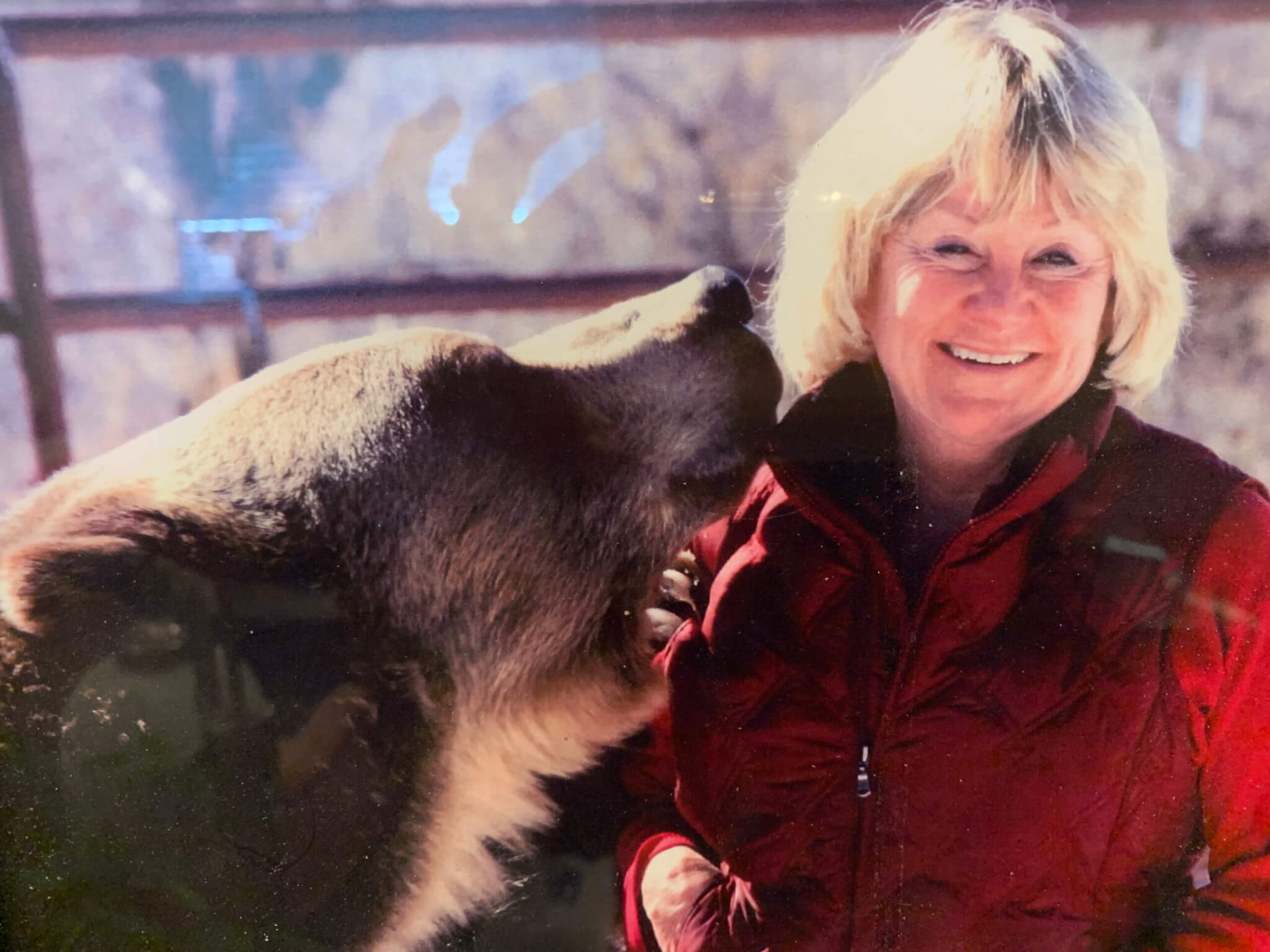
A Sacred Feeling in Wild Places
For Lynne, the heart of the story now isn’t Hollywood — it’s the wild country they’ve helped protect. “In nature and wilderness, you have a connection,” she said. “Nature is healing.”
“If you’re out there where you don’t see traffic lights or people or your iPhone, and can simply be one with nature — that’s a deep, profound spiritual experience,” she said.
She and Doug draw inspiration from Native American and other nature-based spiritual traditions. “Being alone in the wilderness is where we feel closest to the Creator,” she said. “Nature is God. God is nature.”
Looking back with two children, seven grandchildren, and generations of bears behind them, Lynne said she feels only gratitude. “I have deep gratitude for those who believed in Vital Ground and helped us protect this beautiful land that we love.”
Learn more about Bart, Lynne and Doug, and the Vital Ground Foundation in Lynne’s book, The Grizzlies and Us.



















